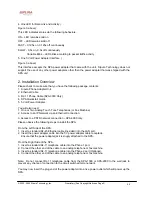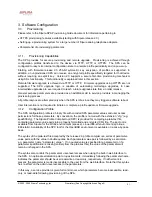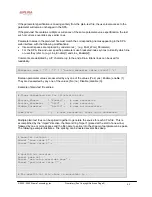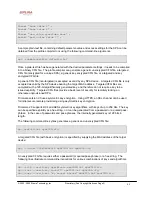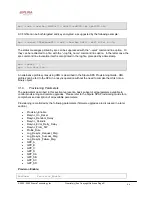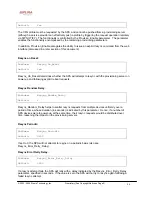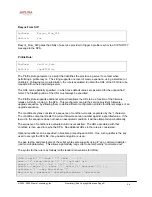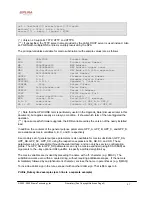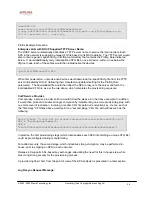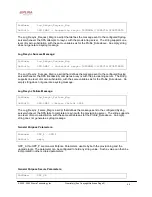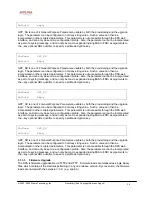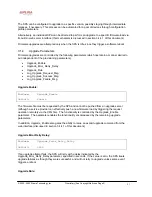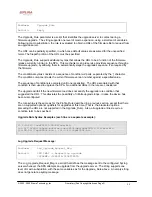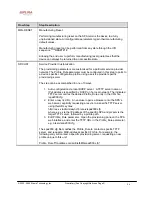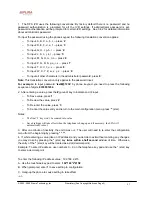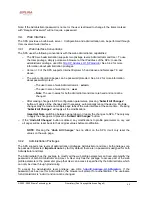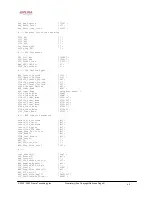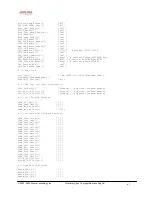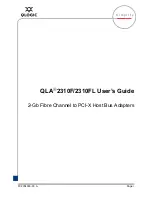
© 2003 - 2005 Sipura Technology, Inc
Proprietary (See Copyright Notice on Page 2)
33
Log Upgrade Success Message:
ParName: Log_Upgrade_Success_Msg
Default:
$PN $MAC –- Successful upgrade
$SCHEME://$SERVIP:$PORT$PATH -- $ERR
The Log_Upgrade_Success_Msg is a script that defines the message sent to the configured Syslog
server whenever the SPA successfully completes an upgrade from the upgrade server. The string
supports one level of macro substitution, with the same variables as for the Upgrade_Rule above. An
empty string does not generate a syslog message.
Log Upgrade Failure Message:
ParName: Log_Upgrade_Failure_Msg
Default:
$PN $MAC –- Upgrade failed: $ERR
The Log_Upgrade_Failure_Msg is a script that defines the message sent to the configured Syslog
server whenever the SPA fails to complete an upgrade from the upgrade server. The string supports
one level of macro substitution, with the same variables as for the Upgrade_Rule above. An empty
string does not generate a syslog message.
3.2. Configuration
Update
Each SPA can be configured to periodically contact a Normal Provisioning Server (NPS). The NPS
can be accessed with a less secure protocol since the updated profile is encrypted by a shared secret
key. The NPS can be a standard TFTP, HTTP or HTTPS server.
3.2.1.
Provisioning Server Redundancy
The Provisioning Server (PS) may be specified as an IP address or a FQDN. PS redundancy is not
available in the former case. For the latter, SPA shall attempt to resolve the IP address of the PS via
DNS .DNS SRV address resolution is not available for provisioning. Only DNS A Records are
supported for provisioning. The SPA shall continue to process A records associated with that host
until one responds. If all the A-records associated with that PS fail to respond, the SPA shall log an
error to the Syslog server.
3.2.2.
SPA Provisioning Flow
Firmware release 1.0 provides basic features in support of secure provisioning. This section
describes the high-level provisioning flow supported by release 1.0 in the context of a service provider
application.
At a high level, the provisioning process involves four (4) provisioning states described in the below
table.
Flow Step
Step Description


